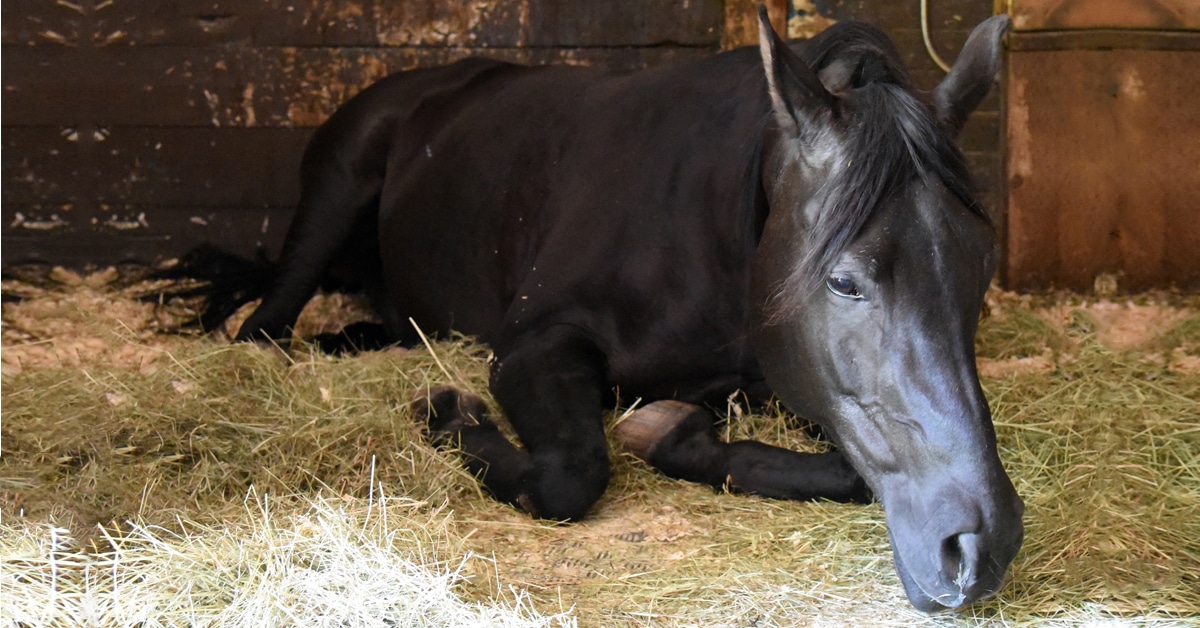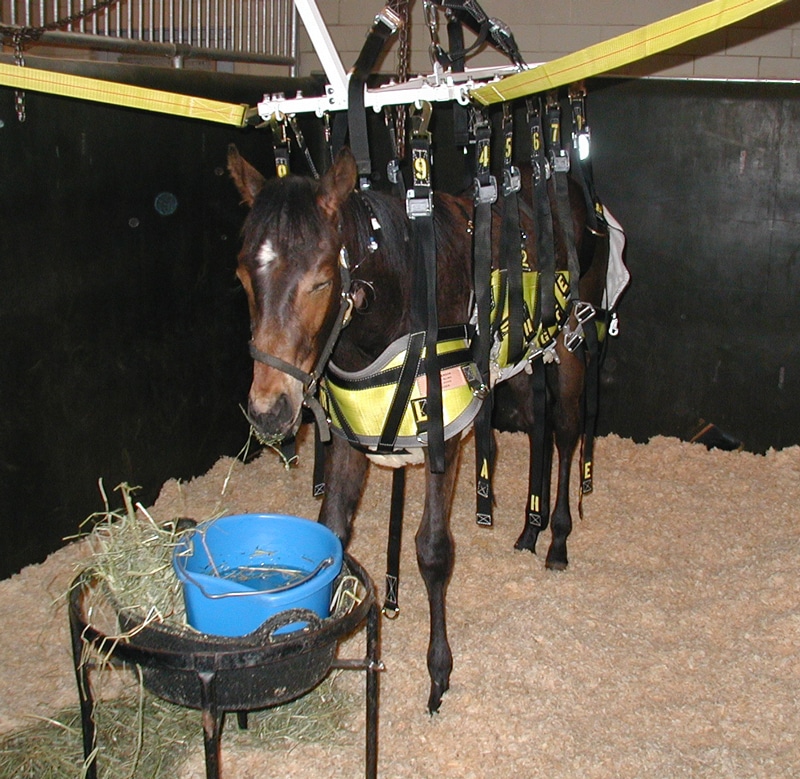Outbreaks of the neurologic form of EHV-1 have occurred in the past weeks in a number of countries in Europe including Spain, Belgium, France, Germany, Italy, Sweden and Qatar, in Canada at farms in Quebec and Ontario, and more recently in Ocala, Florida. As the number of deaths and infections continues to climb rapidly, many wonder what exactly is this debilitating and aggressive manifestation of EHV-1, and how is it different from other forms of the virus?
Equine herpesvirus-1 (EHV-1) is one of five herpesviruses commonly found in horses. EHV-1 is a DNA virus which self-replicates inside a host cell at an extraordinary rate, with infections that manifest in three syndromes: respiratory, reproductive, and neurologic. It is believed that approximately 70% of the equine population have been infected with EHV-1 at some point in their life, most without displaying any symptoms. The virus then lies dormant in the nerve ganglia in the head region and can be reactivated during stressful situations (transport, showing, relocation, illness) and shed or transmitted to other horses through coughing or nasal discharge.
It is important to note that it is not the strains themselves that cause the different manifestations of clinical disease. Both strains (neuropathic and non-neuropathic/wildtype) can cause all of the clinical expressions of disease (respiratory disease, abortion, sick foal, EHM), meaning that EHM is not solely caused by the neuropathic strain. For example, according to OMAFRA, there have been two deaths from neurologic disease due to the non-neuropathic strain in Ontario this year.
The respiratory form of EHV-1 is generally mild and self-limiting. Clinical signs are indistinguishable from other viral causes of respiratory disease, such as equine influenza and EHV-4. Horses generally exhibit a fever, cough, nasal discharge, and mild lethargy.
The reproductive form of EHV-1 causes abortion in the last trimester of gestation and thus can be devastating to breeding operations. The virus infects the mare through the respiratory tract and then enters the bloodstream, traveling to and infecting the fetus. Infection in the mare is generally inapparent and abortion occurs without any warning signs. Affected foals are occasionally born alive, but are generally very weak and die within days of birth.
The neurologic form of EHV-1 (also known as equine herpesvirus myeloencephalopathy, or EHM) manifests with acute onset incoordination or loss of voluntary motor function, often accompanied by weakness, urinary incontinence (or the inability to empty the bladder), loss of appetite, poor tail and anal tone, and the inability to rise. Typically, the horse will run a fever on day 1 or 2 and again on day 6 or 7, although some horses never run a fever at all. In the most serious cases, the disease can progress to paralysis and death, often because euthanasia is the only humane option. The fatality rate for horses that develop severe neurological symptoms is as high as 30%; some animals that do recover continue to display neurological signs. It not understood what causes some EHV infected horses to develop this serious neurological form of the virus.
EHM is especially difficult to control when there is an outbreak within a dense population of horses, such as at racetracks, show grounds, boarding barns barns, and so on. The virus is transferred from horse to horse through contact with nasal discharge or aerosol droplets, and horses can also contract the virus by picking it up from contaminated surfaces such as stalls, water buckets, feed, tack, and trailers. Humans can also spread the virus via contaminated hands and clothing, which make stringent biosecurity efforts (isolation, wearing disposable PPE, sanitizing surfaces and equipment, using disinfectant footbaths, etc.) critical in treating affected horses and preventing the spread of the disease.
Any horse returning from a show should be isolated to prevent the spread of any infectious pathogen, whether or not they are displaying a fever. For horses who are returning from a situation where they may have been exposed to EHV-1, they should be isolated and closely monitored for 21 days.
There is no cure for EHM; horses who develop it may be treated with anti-inflammatory drugs, intravenous fluids and other supportive care. Antibiotics may be used to treat a secondary bacterial infection if one develops but have no effect on the virus itself.
Currently, there is no USDA licensed EHV-1 vaccine which is effective against the neurological form of EHV-1. It is nevertheless important to maintain current EHV vaccinations (and other yearly inoculations as dictated by your location and circumstances) on all horses on your property, which allow them to be better able to fend off any other viruses to which they may be exposed.
While the pathology of EHM is well documented, the development of the disease is not and is the subject of ongoing research, including into identifying a vaccine that may prevent this particularly severe and deadly form of the virus.


